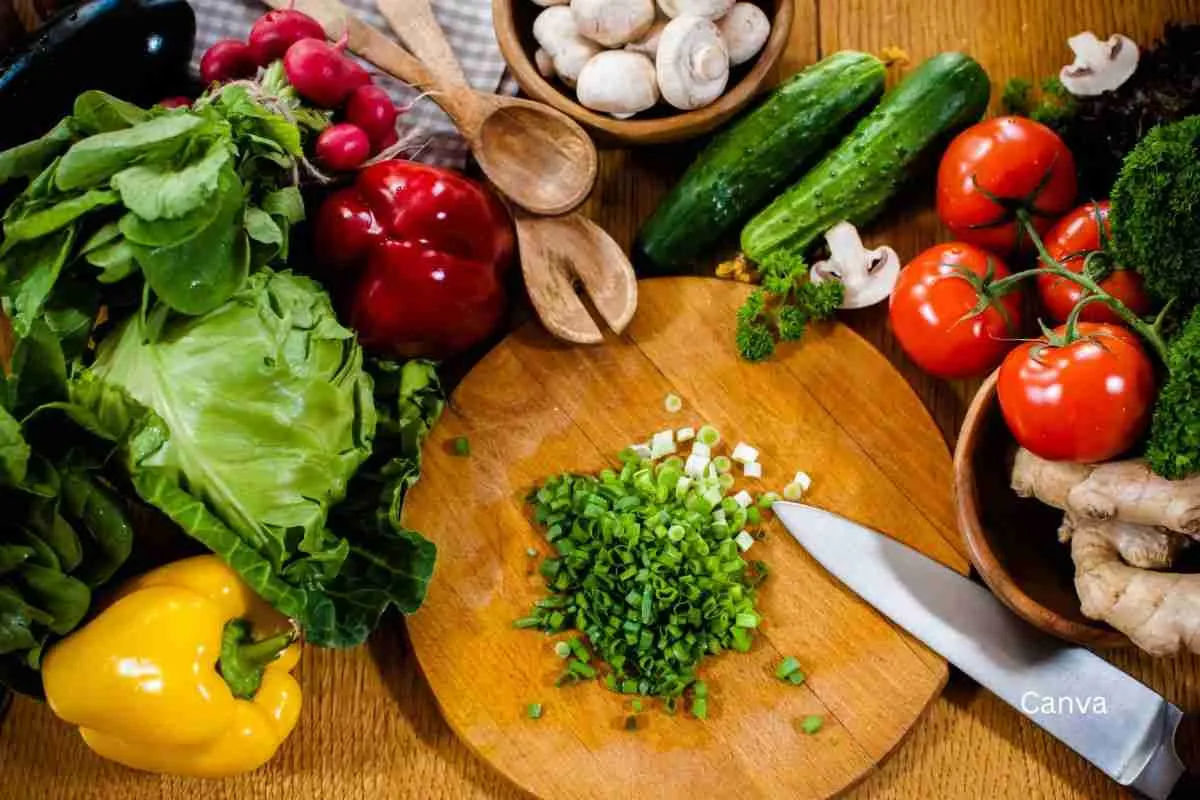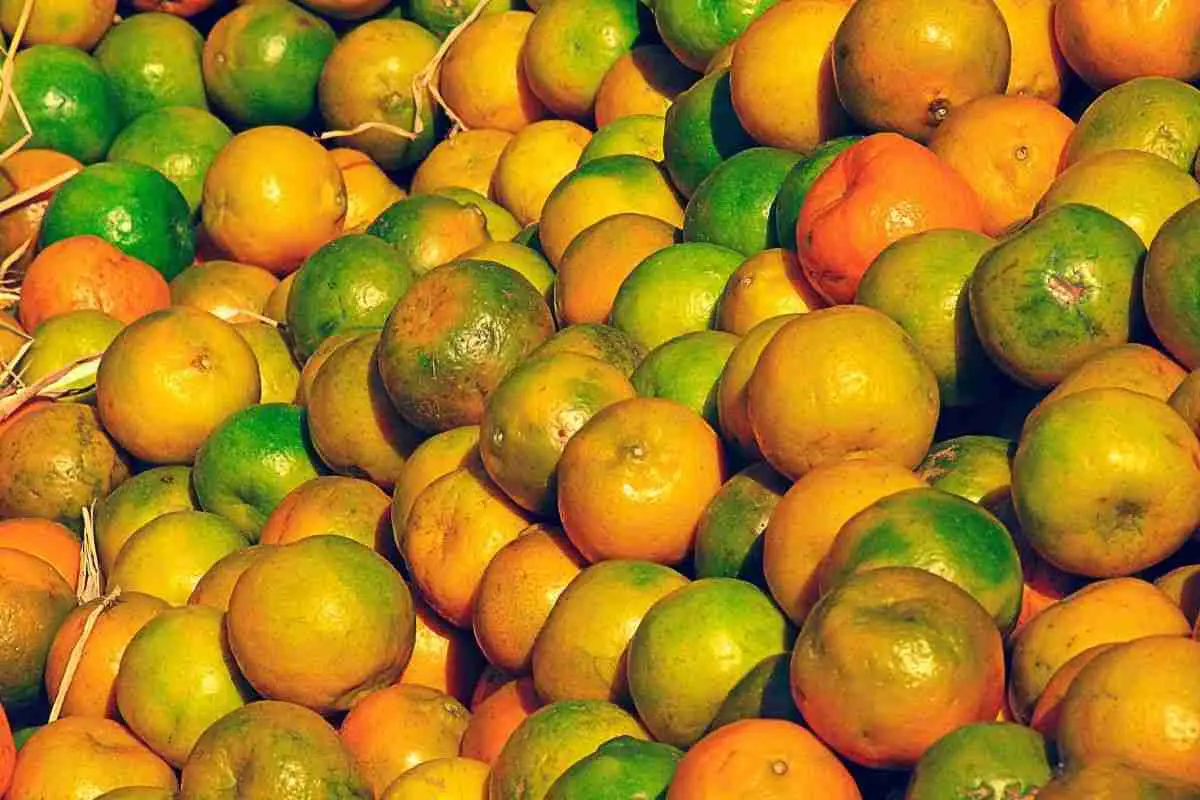Delicious and Diabetes-Safe: Exploring Caribbean Flavors
Indulging in delicious and flavorful food doesn’t have to be off-limits for those managing diabetes. In fact, with Caribbean cuisine, you can explore a whole new world of diabetes-friendly recipes that are not only nutritious but also bursting with delightful flavors.
From mouthwatering jerk chicken to exotic tropical fruits, the Caribbean offers a diverse range of ingredients that can easily be incorporated into a diabetic-friendly diet. This article will guide you to exploring the wonderful world of Caribbean cuisine while embracing your dietary restrictions. Get ready to tantalize your taste buds with recipes prioritizing low-glycemic index ingredients, healthy cooking methods, and vibrant flavors. Whether you prefer savory dishes or have a sweet tooth, we’ve got you covered.
Join us as we journey through the colorful islands of the Caribbean and discover diabetes-friendly recipes that will satisfy your cravings without compromising your health. From plantains to seafood, fresh spices to traditional stews, there’s an array of options waiting for you to explore. Get ready for a culinary adventure that will not only meet your dietary needs but also leave you wanting more.

Understanding diabetes and dietary restrictions
Diabetes is a chronic condition that affects how your body produces or uses insulin, a hormone that helps regulate blood sugar levels. Managing diabetes often involves dietary adjustments to maintain stable blood sugar levels and prevent complications.
Key Dietary Considerations for People with Diabetes:
- Carbohydrates:
- Carbohydrates are the primary source of glucose in the body.
- Aim for a consistent intake of carbohydrates at each meal and snack.
- Focus on complex carbohydrates like whole grains, fruits, and vegetables, which are digested more slowly and can help stabilize blood sugar levels.
- Limit simple carbohydrates, such as sugary drinks, candy, and white bread, which can cause rapid spikes in blood sugar.
- Portion Control:
- Pay attention to portion sizes to avoid overeating and fluctuations in blood sugar.
- Use smaller plates and bowls to help control portions.
- Consider using a food diary or tracking app to monitor your intake.
- Fiber:
- Fiber helps slow down the absorption of glucose, leading to more stable blood sugar levels.
- Include plenty of fruits, vegetables, whole grains, and legumes in your diet.
- Healthy Fats:
- Choose unsaturated fats found in nuts, seeds, avocados, and olive oil.
- Limit saturated and trans fats found in processed foods.
- Protein:
- Protein can help you feel full and satisfied, reducing the likelihood of overeating.
- Include lean meats, poultry, fish, beans, and lentils in your diet.
- Sugar-Sweetened Beverages:
- Limit or avoid sugary drinks, such as soda, fruit juice, and sweetened tea.
- Opt for water, unsweetened tea, or sparkling water instead.
- Alcohol:
- Alcohol can affect blood sugar levels, especially if you take certain diabetes medications.
- If you choose to drink alcohol, consume it in moderation and with a meal.
- Regular Meals and Snacks:
- Skipping meals can lead to low blood sugar.
- Aim for regular meals and snacks throughout the day to maintain stable blood sugar levels.
Individualized Plans:
It’s important to note that dietary needs may vary depending on individual factors, such as type of diabetes, medication, and activity level. Consulting with a registered dietitian or healthcare provider can help create a personalized meal plan that meets your specific needs.
By following these guidelines and working with your healthcare team, you can effectively manage your diabetes and enjoy a healthy, satisfying diet.
The importance of flavor in diabetes-friendly meals
While managing diabetes often involves dietary restrictions, it doesn’t mean you have to sacrifice taste. In fact, flavorful meals can play a significant role in maintaining a healthy diet and managing your blood sugar levels.
Here’s why flavor is important:
- Adherence: Enjoyable meals are more likely to be adhered to, reducing the risk of straying from your diet plan.
- Satisfaction: Flavorful meals can help you feel satisfied and full, reducing the likelihood of overeating.
- Variety: Incorporating a variety of flavors can help prevent boredom and make your diet more sustainable.
- Motivation: Delicious meals can be a source of motivation and enjoyment, making diabetes management less stressful.
Tips for Adding Flavor to Diabetes-Friendly Meals:
- Herbs and Spices: Experiment with different herbs and spices to add flavor without adding extra calories or carbohydrates.
- Marinades and Rubs: Marinate or rub meats and vegetables with flavorful mixtures to enhance their taste.
- Sauces and Condiments: Choose low-sugar or sugar-free sauces and condiments to add flavor without compromising your health.
- Fresh Produce: Use fresh fruits and vegetables to add natural sweetness and flavor to your meals.
- Healthy Fats: Incorporate healthy fats like olive oil, avocado, and nuts to add richness and flavor.
- Cooking Techniques: Experiment with different cooking techniques like grilling, roasting, and baking to enhance the flavor of your food.
Remember: While flavor is important, it’s essential to balance it with nutritional considerations. Choose healthy ingredients and portion control to ensure your meals are both delicious and diabetes-friendly.
By focusing on flavor, you can make diabetes management a more enjoyable and sustainable experience.
Common ingredients in Caribbean cooking for diabetics
Caribbean cuisine is known for its vibrant flavors and fresh ingredients. Many of these ingredients can be incorporated into a diabetes-friendly diet. Here are some common ingredients used in Caribbean cooking that are suitable for people with diabetes:
Fruits and Vegetables:
- Tropical fruits: Pineapple, mango, papaya, guava, and coconut are all excellent sources of vitamins, minerals, and fiber.
- Root vegetables: Yams, sweet potatoes, and plantains are starchy vegetables that can be enjoyed in moderation.
- Leafy greens: Kale, spinach, and collard greens are nutrient-dense and low in calories.
- Legumes: Black beans, kidney beans, and lentils are excellent sources of protein and fiber.
Spices and Herbs:
- Jerk seasoning: A blend of allspice, thyme, chili peppers, and other spices that adds flavor without excess calories.
- Curry powder: A blend of spices that can be used to flavor meats, vegetables, and rice.
- Cumin: A warm and earthy spice that can be used in a variety of dishes.
- Garlic and onion: These versatile ingredients add flavor without adding extra calories.














Proteins:
- Fish: Freshly caught fish is a healthy and low-calorie protein source.
- Chicken: Opt for lean cuts of chicken and prepare it using healthy cooking methods like grilling or baking.
- Seafood: Shrimp, crab, and lobster are all good options for low-fat protein.
- Tofu and tempeh: These plant-based proteins are great alternatives for vegetarians and vegans.
Healthy Fats:
- Olive oil: A healthy source of monounsaturated fats.
- Avocado: A nutrient-dense fruit that is high in healthy fats.
- Coconut oil: While it’s high in saturated fat, coconut oil can be used in moderation.
Remember to choose healthy cooking methods like grilling, baking, and steaming to reduce the amount of added fat and calories. By incorporating these ingredients into your diet, you can enjoy the delicious flavors of Caribbean cuisine while managing your diabetes.
Healthy substitutes for traditional Caribbean ingredients
Caribbean cuisine is renowned for its bold flavors, but some traditional ingredients might not align with a diabetes-friendly diet. Here are some healthier alternatives:
Sugars and Sweeteners:
- Honey or maple syrup: Replace refined sugar with natural sweeteners like honey or maple syrup in moderation.
- Stevia or monk fruit: These natural sweeteners have fewer calories than sugar.
- Fruit: Use fresh or frozen fruits to add sweetness to desserts and drinks.
Oils and Fats:
- Avocado oil: Replace unhealthy fats with avocado oil, which is rich in healthy monounsaturated fats.
- Olive oil: Olive oil is another healthy option for cooking and dressings.
- Coconut oil: While it’s high in saturated fat, coconut oil can be used in moderation for its potential health benefits.
Dairy Products:
- Greek yogurt: Opt for Greek yogurt over regular yogurt for its higher protein content and lower sugar content.
- Plant-based milk: Use plant-based milk like almond, soy, or oat milk as an alternative to dairy milk.
- Reduced-fat cheese: Choose reduced-fat cheese to lower calorie and fat intake.
Spices and Herbs:
- Ground spices: Use ground spices instead of whole spices to extract more flavor with less quantity.
- Herbs: Incorporate fresh or dried herbs like thyme, basil, and cilantro to add flavor without adding extra calories.
Grains:
- Brown rice: Replace white rice with brown rice for its higher fiber content.
- Quinoa: Quinoa is a nutritious grain that can be used as a substitute for rice or pasta.
- Whole-wheat pasta: Choose whole-wheat pasta over refined pasta for its higher fiber content.
Sweeteners:
- Agave nectar: Agave nectar is a natural sweetener with a lower glycemic index than sugar.
- Coconut sugar: Coconut sugar is a natural sweetener with a slightly lower glycemic index than regular sugar.
Remember, moderation is key. While these substitutes can help you enjoy Caribbean flavors while managing diabetes, it’s essential to consult with a healthcare professional or registered dietitian for personalized advice.
Diabetes-friendly Caribbean appetizers and snacks
Caribbean cuisine offers a variety of delicious and flavorful appetizers and snacks that can be enjoyed while managing diabetes. Here are a few options:
Appetizers:
- Jerk-spiced shrimp skewers: Grill shrimp marinated in a jerk seasoning for a flavorful and protein-packed appetizer.
- Avocado and mango salsa: This fresh and colorful salsa is a perfect accompaniment to grilled fish or chicken.
- Black bean and corn fritters: These crispy fritters are made with protein-rich black beans and sweet corn.
- Grilled plantain chips: Thinly sliced plantains can be grilled or baked for a healthy and crunchy snack.
Snacks:
- Fruit salad with coconut yogurt: A refreshing and nutritious snack that is packed with vitamins and minerals.
- Vegetable sticks with hummus: Dip fresh vegetables like carrots, celery, and cucumber into a homemade or store-bought hummus.
- Grilled pineapple skewers: Sweet and tangy grilled pineapple skewers are a delicious and healthy snack.
- Jerk-spiced chicken wings: Bake chicken wings marinated in a jerk seasoning for a flavorful and satisfying snack.
Tips for Diabetes-Friendly Appetizers and Snacks:
- Portion control: Be mindful of portion sizes to avoid overeating.
- Choose healthy fats: Opt for healthy fats like avocado and olive oil.
- Limit added sugars: Avoid sugary sauces and condiments.
- Incorporate protein: Include protein sources like shrimp, chicken, and beans to keep you feeling full.
By following these tips and choosing healthy ingredients, you can enjoy delicious and diabetes-friendly Caribbean appetizers and snacks.
Main course options for diabetics in Caribbean cuisine
Caribbean cuisine offers a variety of delicious and nutritious main course options that are suitable for people with diabetes. Here are a few suggestions:
Fish and Seafood:
- Grilled or baked fish: Choose lean cuts of fish like salmon, tilapia, or mahi-mahi and prepare it using healthy cooking methods.
- Seafood stew: A flavorful and hearty stew made with fish, shrimp, and vegetables.
- Fish tacos: Serve grilled or baked fish in tortillas with a variety of toppings like salsa, avocado, and cilantro.
Meat:
- Jerk-spiced chicken or pork: Marinate lean cuts of chicken or pork in a jerk seasoning and grill or bake.
- Grilled or baked chicken breast: A lean and healthy protein option that can be served with a variety of sides.
- Stewed beef: A hearty and flavorful stew made with lean cuts of beef and vegetables.
Vegetarian and Vegan Options:
- Vegetable curry: A flavorful and satisfying curry made with a variety of vegetables.
- Lentil stew: A hearty and protein-packed stew made with lentils and vegetables.
- Black bean and rice: A classic Caribbean dish that is high in protein and fiber.
Side Dishes:
- Steamed or roasted vegetables: A healthy and nutritious side dish that can be served with any main course.
- Brown rice or quinoa: These whole grains are a good source of fiber and complex carbohydrates.
- Plantains: Plantains can be grilled, baked, or fried, but be mindful of portion sizes.
Tips for Diabetes-Friendly Caribbean Main Courses:
- Choose lean cuts of meat: Opt for lean cuts of chicken, fish, or beef to reduce saturated fat intake.
- Limit added sugars: Avoid sugary sauces and marinades.
- Incorporate vegetables: Include plenty of vegetables in your meals to increase fiber and nutrient intake.
- Choose healthy cooking methods: Grill, bake, or steam your food to reduce added fat and calories.
By following these tips and choosing healthy ingredients, you can enjoy delicious and diabetes-friendly Caribbean main courses.
Caribbean-inspired diabetic-friendly desserts
Caribbean cuisine offers a variety of sweet treats that can be enjoyed even if you have diabetes. Here are some diabetic-friendly options:
Fruit-Based Desserts:
- Mango sorbet: A refreshing and low-sugar dessert made with ripe mangoes.
- Pineapple and coconut parfait: Layer Greek yogurt, pineapple chunks, and shredded coconut for a delicious and nutritious treat.
- Guava paste: This traditional Caribbean sweet can be enjoyed in moderation.
Baked Goods:
- Whole-wheat flour and coconut oil cookies: These cookies are a healthier alternative to traditional Caribbean sweet treats.
- Low-sugar fruit cake: A festive and flavorful cake made with fruits and nuts.
- Sweet potato pudding: A creamy and satisfying dessert made with sweet potatoes and spices.
Other Options:
- Sugar-free flan: This custard-like dessert can be made with sugar substitutes.
- Coconut ice: A chewy and sweet treat made with coconut milk and sugar substitutes.
- Gingerbread: A classic Caribbean spice cake that can be made with whole-wheat flour and sugar substitutes.
Tips for Diabetic-Friendly Caribbean Desserts:
- Portion control: Be mindful of portion sizes to avoid overeating.
- Choose healthy ingredients: Opt for whole grains, fruits, and natural sweeteners.
- Limit added sugars: Avoid sugary sauces and toppings.
- Incorporate protein: Add protein sources like Greek yogurt or nuts to your desserts.
By following these tips, you can enjoy delicious and diabetic-friendly Caribbean desserts without compromising your health.
Tips for meal planning and portion control
Meal planning and portion control are essential for managing diabetes. Here are some helpful tips:
Meal Planning Tips:
- Create a weekly meal plan: This will help you stay organized and avoid impulse eating.
- Involve your family: Get your family involved in the meal planning process to ensure everyone is satisfied.
- Stock your pantry: Keep your pantry stocked with healthy ingredients to make meal preparation easier.
- Prepare meals in advance: Cook meals in advance and store them in the refrigerator or freezer for quick and easy meals.
- Consider your schedule: Plan meals that fit your schedule and lifestyle.
Portion Control Tips:
- Use smaller plates and bowls: This can help you eat smaller portions without feeling deprived.
- Measure your food: Use measuring cups and spoons to control portion sizes.
- Pay attention to serving sizes: Refer to nutrition labels and portion size guidelines.
- Listen to your body: Pay attention to hunger and fullness cues.
- Avoid distractions: Eat in a quiet environment without distractions to focus on your meal.
Additional Tips:
- Track your food intake: Use a food diary or app to track your food intake and portion sizes.
- Seek professional help: Consult with a registered dietitian or healthcare provider for personalized advice.
- Don’t be afraid to experiment: Try new recipes and ingredients to keep your meals interesting.
By following these tips, you can effectively plan your meals and control your portions, which can help you manage your diabetes and maintain a healthy weight.
Conclusion: Embracing the flavors of the Caribbean while managing diabetes
Caribbean cuisine offers a vibrant and flavorful experience that can be enjoyed while managing diabetes. By incorporating healthy ingredients, controlling portions, and making informed choices, individuals with diabetes can savor the delicious tastes of the Caribbean without compromising their health.
Key takeaways:
- Diabetes-friendly Caribbean cuisine: Many traditional Caribbean dishes can be adapted to fit a diabetes-friendly diet.
- Flavorful and nutritious: Caribbean cuisine is packed with flavor and essential nutrients.
- Balanced approach: Enjoy Caribbean food in moderation and balance it with other healthy dietary choices.
- Individualized plans: Consult with a healthcare provider or registered dietitian for personalized advice.
By embracing the flavors of the Caribbean and making informed choices, individuals with diabetes can lead a fulfilling and enjoyable life.
Source
- https://www.who.int/news-room/fact-sheets/detail/diabetes
- Glycogen: What It Is & Function – Cleveland Clinic my.clevelandclinic.org
- 1. Regarding dietary carbohydrate, a patient with diabetes should be most concerned about – Vaia www.vaia.com
- Diabetes diet: Create your healthy-eating plan – Mayo Clinic www.mayoclinic.org
- How to Prevent Blood Sugar Spikes – Healthline www.healthline.com
- Diabetes diet: Create your healthy-eating plan – Mayo Clinic www.mayoclinic.org
- Importance of portion control in managing diabetes – Continental Hospitals continentalhospitals.com
- Fiber: The Carb That Helps You Manage Diabetes – CDC www.cdc.gov
- The Role of Healthy Fats in Diabetes Management diabetes-m.com
- Diabetes diet: Create your healthy-eating plan – Mayo Clinic www.mayoclinic.org
- Protein, weight management, and satiety – PubMed pubmed.ncbi.nlm.nih.gov
- Dietary Advice For Individuals with Diabetes – Endotext – NCBI Bookshelf www.ncbi.nlm.nih.gov
- Diabetes and alcohol: MedlinePlus Medical Encyclopedia medlineplus.gov
- What Happens to the Body When You Skip Meals? – Piedmont Healthcare www.piedmont.org
- Timing Your Meals and Insulin Doses Properly Can Help Keep Your Blood Sugar Steady – WebMD www.webmd.com
- https://www.betterhealth.vic.gov.au/health/conditionsandtreatments/diabetes-and-healthy-eating
- https://my.clevelandclinic.org/health/articles/23509-glycogen
- https://www.vaia.com/en-us/textbooks/biology/nutrition-for-health-and-health-care-7-edition/chapter-20/problem-5-regarding-dietary-carbohydrate-a-patient-with-diab/
- https://www.mayoclinic.org/diseases-conditions/diabetes/in-depth/diabetes-diet/art-20044295






